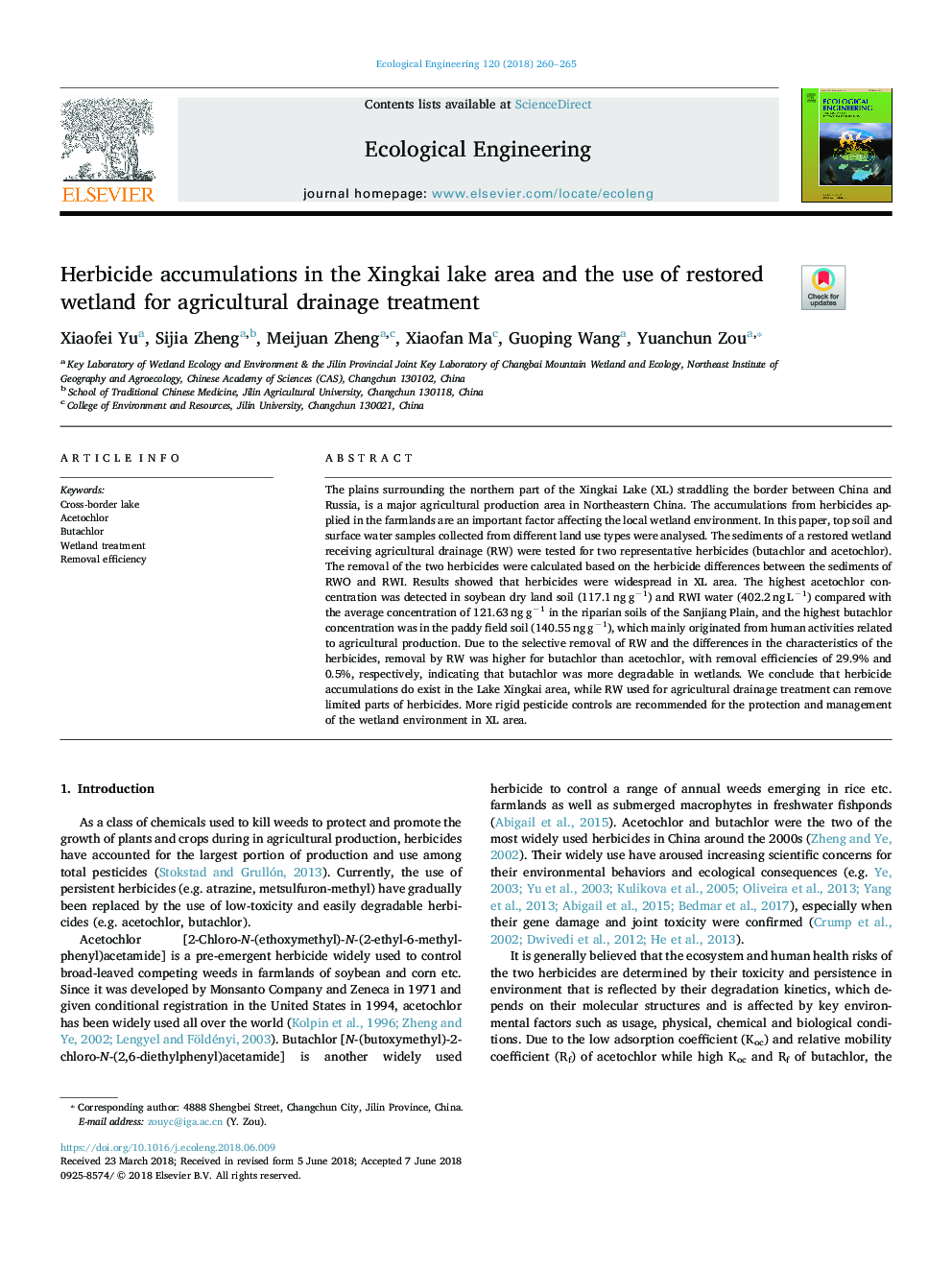| Article ID | Journal | Published Year | Pages | File Type |
|---|---|---|---|---|
| 8847797 | Ecological Engineering | 2018 | 6 Pages |
Abstract
The plains surrounding the northern part of the Xingkai Lake (XL) straddling the border between China and Russia, is a major agricultural production area in Northeastern China. The accumulations from herbicides applied in the farmlands are an important factor affecting the local wetland environment. In this paper, top soil and surface water samples collected from different land use types were analysed. The sediments of a restored wetland receiving agricultural drainage (RW) were tested for two representative herbicides (butachlor and acetochlor). The removal of the two herbicides were calculated based on the herbicide differences between the sediments of RWO and RWI. Results showed that herbicides were widespread in XL area. The highest acetochlor concentration was detected in soybean dry land soil (117.1â¯ngâ¯gâ1) and RWI water (402.2â¯ngâ¯Lâ1) compared with the average concentration of 121.63â¯ngâ¯gâ1 in the riparian soils of the Sanjiang Plain, and the highest butachlor concentration was in the paddy field soil (140.55â¯ngâ¯gâ1), which mainly originated from human activities related to agricultural production. Due to the selective removal of RW and the differences in the characteristics of the herbicides, removal by RW was higher for butachlor than acetochlor, with removal efficiencies of 29.9% and 0.5%, respectively, indicating that butachlor was more degradable in wetlands. We conclude that herbicide accumulations do exist in the Lake Xingkai area, while RW used for agricultural drainage treatment can remove limited parts of herbicides. More rigid pesticide controls are recommended for the protection and management of the wetland environment in XL area.
Related Topics
Life Sciences
Agricultural and Biological Sciences
Ecology, Evolution, Behavior and Systematics
Authors
Xiaofei Yu, Sijia Zheng, Meijuan Zheng, Xiaofan Ma, Guoping Wang, Yuanchun Zou,
